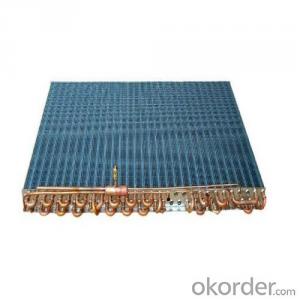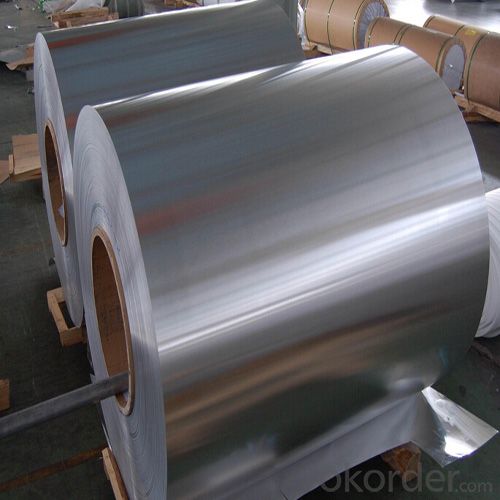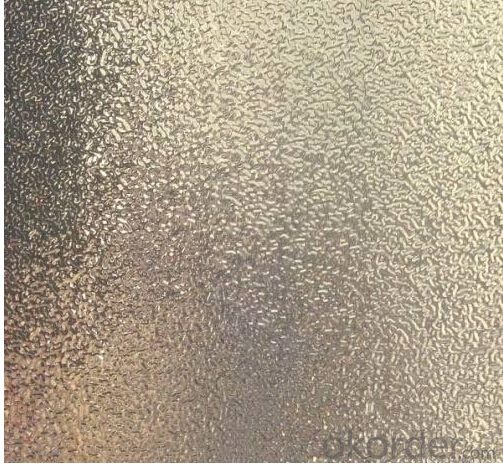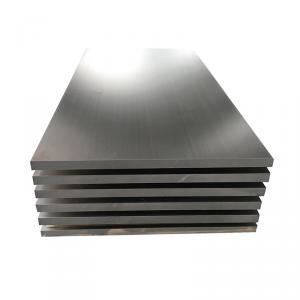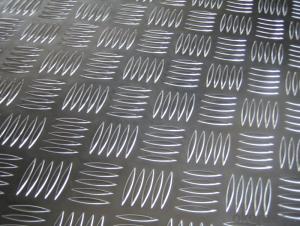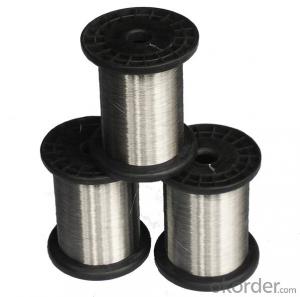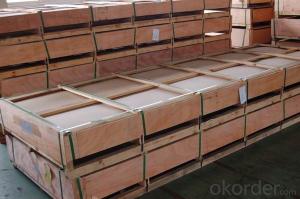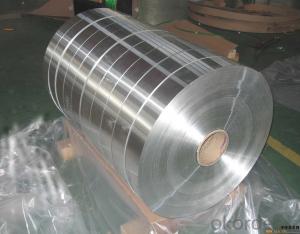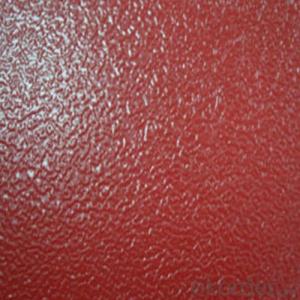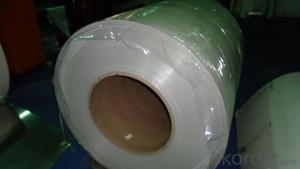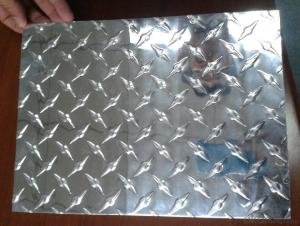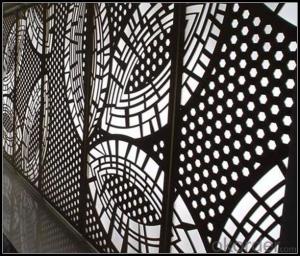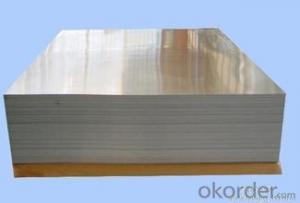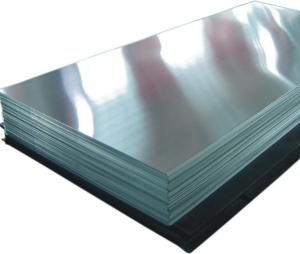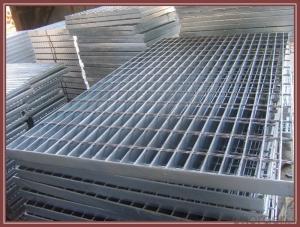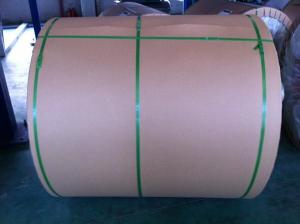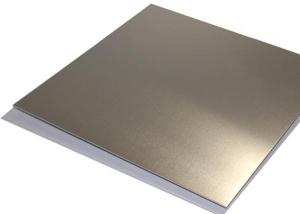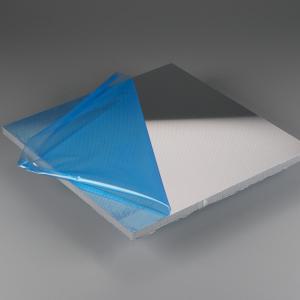Aluminum Stucco Sheets for Trailers - Suitable for Air-Condition and Refrigerator
- Loading Port:
- Shanghai
- Payment Terms:
- TT OR LC
- Min Order Qty:
- 10000 pc
- Supply Capability:
- 1000000 pc/month
OKorder Service Pledge
OKorder Financial Service
You Might Also Like
Specification
1.Structure of Aluminium Stucco Sheet for Air-Condition and Refrigerator Description:
Embossed Stucco Aluminum sheet is widely used for roofing sheets and refrigerator.Pattern: Rhombic veins, orange peel veins, diamond veins, five-rib veins etc.
Here is our products specification for your reference:01) Alloy: A1100, A1050, A3003, A8011 etc 02)
Aluminum thickness: 0.25mm~2.0mm 03) Aluminum standard width: 1200mm Max width:
1500m.Aluminium Stucco Embossed Sheet is widely used in the fields of refregerator, wine cabinet,
solar panel, decorative aluminium product, linghting fixture, lighting box, sanitizer, kitchen cabinet and
central air conditioning system. The Anodized Aluminium Stucco Embossed Sheet is beautiful, with
thickness from 0.15mm to1.5mm, while the maximum width is 1.4m, after pattern embossed, the
thickness couls be 0.1 to 0.25mm more. Additionally, we offer processing service for Anodized
Aluminium Stucco Embossed Sheet, which could further strength panel's ability of anti-weather and anti-corrosion.
2.Main Features of Aluminium Stucco Sheet for Air-Condition and Refrigerator:
PVC Protect Film
Waterproof paper
High Quality
Competitive Price
3. Alloy Aluminum Plate 1200 Images:
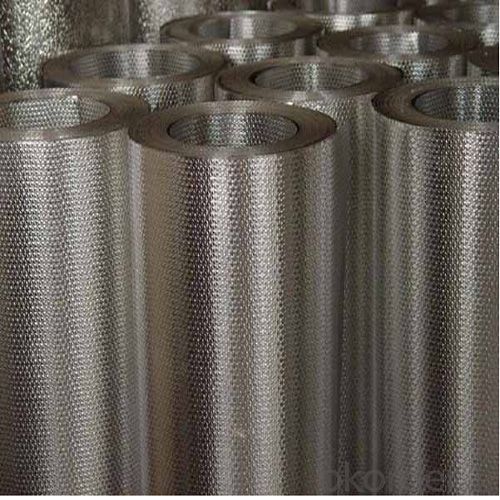
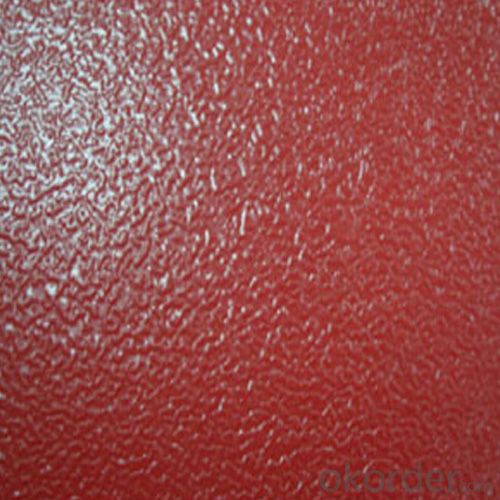
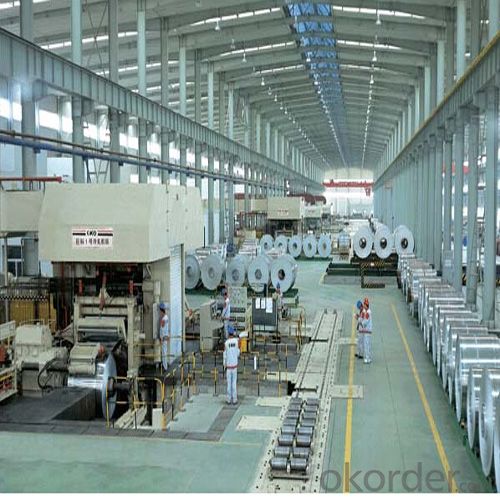
4. Aluminium Stucco Sheet for Air-Condition and Refrigerator Specification:
Standard | GB/T3190-2008, GB/T3880-2006, ASTM B209, JIS H4000-2006 .etc |
Thickness | 0.2-200mm aluminium 5050 H38 |
Width | 1250mm 1000mm or as your requirements |
Length | 3000mm 5800mm or as your requirements |
MOQ | 5 Ton |
Package | Standard export package, by wooden box or as require |
5.FAQ
Q1.How long have you been in this product?
A1:More than 10 years.
Q2. What's the minium quantity(MOQ)?
A2. 5 Metric tons
Q3. How long is shipping time?
A3. 7 (ready-made products)-25 days(OEM)
Q4. How do you guarantee the quality?
A4. 1. Cooperating and Exchaning experience with sevral quoted aluminum companies
2. Japanese and Swiss production line and skilled works (regular training and testing)
3. more than 10 years production experience.
Q5. Do you have after sale service?
A5. Yes. Any quality problem occurs within one year, pls take photoes,we will be responsible.
- Q: Are the aluminum sheets suitable for manufacturing automotive parts?
- Automotive parts can be effectively manufactured using aluminum sheets. This material, known for its lightweight and durability, provides several advantages in automotive applications. With a high strength-to-weight ratio, it is ideal for producing parts that require strength without burdening the vehicle with excessive weight. Aluminum sheets find widespread use in the production of automotive body panels, including hoods, doors, and fenders. Their malleability facilitates easy shaping and forming, enabling manufacturers to create intricate designs and complex details. Moreover, aluminum exhibits excellent corrosion resistance, ensuring longevity and reduced maintenance for the automotive parts made from it. In addition, aluminum's exceptional thermal conductivity makes it a suitable choice for components that necessitate heat dissipation, such as radiators and heat exchangers. Its ability to conduct electricity also renders it valuable in the manufacturing of electrical components for vehicles. Overall, the utilization of aluminum sheets in automotive manufacturing offers numerous benefits. Their lightweight nature enhances fuel efficiency, while their strength and durability guarantee the structural integrity of the vehicle. Furthermore, aluminum's corrosion resistance and thermal conductivity make it a reliable option for a variety of automotive parts.
- Q: What are the safety considerations when handling and working with aluminum sheets?
- When handling and working with aluminum sheets, there are several safety considerations that should be taken into account. Firstly, it is important to wear appropriate personal protective equipment (PPE). This includes safety glasses or goggles to protect the eyes from any potential flying debris or metal shards. Additionally, gloves should be worn to protect the hands from sharp edges or cuts. Secondly, it is crucial to handle aluminum sheets with care, as they can be quite sharp. When lifting or moving the sheets, it is recommended to use gloves and other tools to minimize the risk of injury. Additionally, it is important to be mindful of the weight of the sheets to avoid strains or back injuries. Another safety consideration is the potential for fire hazards. Aluminum is a highly flammable material, especially in the form of fine dust or shavings. Therefore, it is important to keep the work area clean and free from any loose aluminum debris. It is also advisable to have appropriate fire extinguishing equipment nearby and to be aware of the location of emergency exits. Furthermore, when cutting or shaping aluminum sheets, it is important to use proper techniques and tools. Using the appropriate saws or shears can help minimize the risk of injury. It is also important to secure the sheets properly to prevent them from moving or falling during the cutting process. Lastly, it is important to be aware of any potential health hazards associated with aluminum. Aluminum dust or fumes can be harmful if inhaled, so it is important to work in a well-ventilated area or use respiratory protection if necessary. In summary, the safety considerations when handling and working with aluminum sheets include wearing appropriate PPE, handling the sheets with care, minimizing fire hazards, using proper cutting techniques and tools, and being aware of potential health hazards. By following these precautions, the risks associated with working with aluminum sheets can be minimized, ensuring a safe working environment.
- Q: This question asks for a comparison of aluminum sheets with other common materials used in building insulation, focusing on their properties and performance.
- <p>Aluminum sheets are lightweight and have excellent thermal conductivity, which can be both an advantage and a disadvantage in insulation. They reflect heat well, making them useful in radiant barrier applications, but they are poor insulators as they do not trap heat. In contrast, materials like fiberglass, cellulose, and mineral wool have lower thermal conductivity and are more effective at reducing heat transfer. These materials are better at insulating as they trap air, which is a poor conductor of heat. Foam insulation, such as polyurethane and polystyrene, also offers good thermal resistance due to their closed-cell structure. Overall, aluminum sheets are not typically used as primary insulation but can be effective in specific applications where heat reflection is desired.</p>
- Q: How do aluminum sheets perform in terms of dimensional stability?
- Aluminum sheets generally exhibit good dimensional stability due to their low coefficient of thermal expansion, meaning they are less likely to warp or deform when exposed to temperature changes compared to other materials.
- Q: why does the hardness of 2024 aluminum sheet not increase but decrease after thermal treatment?
- The hardness of 2024 aluminum sheet will decrease after thermal treatment(solution treatment), and it will increase after aging treatment.
- Q: What are the different methods of cutting aluminum sheet?
- Various methods exist for cutting aluminum sheet, each offering unique advantages and applications. 1. Shearing: Employing a sharp blade, shearing provides a quick and efficient process for straightforward cuts. However, it may not be suitable for complex or intricate designs. 2. Laser cutting: By utilizing a high-powered laser beam, laser cutting achieves precise and clean cuts. This method is ideal for intricate designs, allowing for detailed and accurate cuts. Additionally, laser cutting can be automated, making it suitable for large-scale production. 3. Waterjet cutting: With a high-pressure stream of water mixed with abrasive materials, waterjet cutting is versatile and capable of handling various materials and thicknesses. It produces smooth and precise cuts without generating heat, making it suitable for heat-sensitive materials. 4. Plasma cutting: Plasma cutting involves using a plasma torch to heat and melt the aluminum sheet, resulting in a cut. It is a fast and cost-effective method, particularly for thicker sheets. However, the cut may not be as clean as laser or waterjet cutting. 5. CNC milling: By employing a rotating cutting tool, known as Computer Numerical Control (CNC) milling, material is removed from the aluminum sheet to create a cut. This method offers precision and the ability to produce complex shapes and designs. It is commonly used for prototypes or small production runs. When selecting the appropriate method for cutting aluminum sheet, factors to consider include desired cut quality, design complexity, material thickness, and production volume.
- Q: Are the aluminum sheets suitable for manufacturing solar panel backings?
- Yes, aluminum sheets are suitable for manufacturing solar panel backings. Aluminum is a widely used material in the solar industry due to its excellent properties. It is lightweight, durable, and corrosion-resistant, making it ideal for outdoor applications. Additionally, aluminum has a high thermal conductivity, allowing it to dissipate heat effectively, which is crucial for solar panels to operate efficiently. Furthermore, aluminum is easily recyclable, making it a sustainable choice for solar panel manufacturing. Overall, aluminum sheets are a suitable material for manufacturing solar panel backings.
- Q: I just built a stone wall with illuminated glass features embedded, and to make them shine evenly, I had all sides but the visual one wrapped in industrial thickness aluminium foil. One week later, the foil has disintegrated. I have used type 10 Portland. What is going on?
- I believe your problem is that concrete acts as a fairly strong base (this is especially true of mortar mixes). It is well known that strong base will react with an active metal like aluminium and produce hydrogen gas as a byproduct. The representative reaction is: 2Al+6NaOH==2Na3AlO3+3H2, This reaction is fairly rapid and can even cause an explosive buildup of hydrogen gas in a non-ventillated area.
- Q: What are the common surface treatments for aluminum sheets used in outdoor applications?
- The common surface treatments for aluminum sheets used in outdoor applications include anodizing, powder coating, and PVDF coating. Anodizing is an electrochemical process that creates a durable, corrosion-resistant layer on the surface of the aluminum sheet. It involves immersing the sheet in an electrolyte solution and applying a current to form a thick oxide layer. Anodized aluminum sheets are highly resistant to weathering, UV rays, and corrosion, making them suitable for outdoor applications. Powder coating is a dry finishing process where a powdered paint is electrostatically applied to the aluminum sheet. The sheet is then heated, causing the powder to melt and form a smooth, durable coating. Powder coating offers excellent resistance to weathering, scratches, and fading, making it ideal for outdoor use. Additionally, it provides a wide range of color options and a uniform, attractive appearance. PVDF (polyvinylidene fluoride) coating is a high-performance coating that combines resin with ceramic particles. This coating is applied as a liquid and then cured at high temperatures to form a continuous, protective film on the aluminum sheet. PVDF coatings provide exceptional resistance to fading, chalking, and chemical exposure, making them suitable for harsh outdoor environments. They also offer excellent color retention, durability, and resistance to UV rays. All these surface treatments enhance the durability, weather resistance, and aesthetic appeal of aluminum sheets, making them ideal for outdoor applications such as architectural facades, signage, transportation, and marine industries. It is important to select the appropriate surface treatment based on the specific requirements of the outdoor application, considering factors such as durability, color options, and resistance to weathering and corrosion.
- Q: why intact aluminum sheet stop quicker than pectinate one in the magnetic field?
- while swinging in the magnetic field, intact aluminum sheets will formulate inner eddy current,that is the annular induced current.eddy current will transform the mechanical energy into heat energy, which makes the aluminum sheet stop quickly.but pectinate aluminum sheet can't formulate intact eddy current, so intact aluminum sheet stop quicker than pectinate one.
Send your message to us
Aluminum Stucco Sheets for Trailers - Suitable for Air-Condition and Refrigerator
- Loading Port:
- Shanghai
- Payment Terms:
- TT OR LC
- Min Order Qty:
- 10000 pc
- Supply Capability:
- 1000000 pc/month
OKorder Service Pledge
OKorder Financial Service
Similar products
Hot products
Hot Searches
Related keywords
